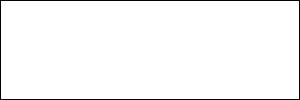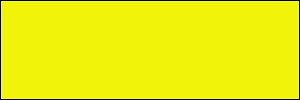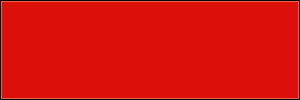Last Updated on February 23, 2024
If you have ever designed a website, chances are you’ve put a lot of thought into layout, text, and navigation. But there is another important element of a successful websites that even an amateur web designer needs to take into account in order to create a dynamic, engaging website that gives your viewers exactly the message you are intending to give: the color scheme. If your website is focused on sales, you want the color scheme of your website to serve as the perfect backdrop for the type of products you are selling. If the website is for personal promotion, you want the colors to indicate to viewers the kind of person that you are. While colors have many associations in our society, you have to take into account popular web color schemes and associations before setting up the dominant colors in your website. Let’s look at a few of the most popular website color schemes:
White

While white can seem basic and maybe even boring, a few very modern companies have reclaimed white as the cool, eye-appealing color of the future. Google and Apple are just two companies that use white-focused color palettes almost exclusively. Using white can give a very professional image to your website, but one word of warning: a white website that is not very professionally designed can look more amateur than one of another color, so use white only if you are sure you can use it well. Also, be sure that your product line will look good against a white background. If you are selling handmade prints, white is a good neutral background, but if you are offering custom wedding bands, white may be too light and washed-out.
Black

Another sleek, sexy color option is deep, glossy black. Black is not as dark or depressing as you might think, especially if you add some glamour with flashes of sparkle or glitter. Having an all-black website conjures images of exclusive nightclubs, glamorous events, and Hollywood exclusivity—perfect if you are selling accessories for a fun night on the town, but less on-point if you are offering good diamonds. Black can look too somber for anything geared towards children, babies, or mothers, but can toughen up a site to help it appeal to teens or young men.
Blue

Blue is neutral, universally liked, and easy on the eyes, so it is no surprise that it is one of the most universally popular website colors. Blue can work for just about any kind of product or business, although it does connote a certain coolness that would be out of place if you were advertising, say, a pottery painting store. If you are selling products geared for babies, using only blue might send the message that you only offer stuff for boys. Additionally, because blue is so popular, beware of choosing particular shades of blue that have very strong associations with popular websites—such as the moderate greenish-blue known as 3B5998 used for Facebook. (Fun fact: Facebook’s predominant color is blue because founder Mark Zuckerburg is colorblind and can see blue better than any other color.) You may also want to avoid the color known as 4099FF—which you might be familiar with as the shade used by Twitter.
Green

While green is a soothing, neutral color that would be good for many types of website, its strong cultural connotation is that of environmental friendliness. Use a color scheme of green, beige and other earth tones to convey the image that your products are organic, eco-friendly, or made with recycled materials. This effect is subtle—studies have shown that adding even a hint of green to a food label makes customers think the product is fresher and more natural. So even a tint of green on your website will have browsers subconsciously assuming that your products are more natural—and can be a great way to bring that fact to their attention. That being said, if your website has nothing to do with earth-friendliness, using too much green might seem jarring or out of place.
Yellow

Between yellow road signs, yellow pages, yellow Post-it notes, and yellow cabs, the color yellow has taken on an aura of functionality and practicality that make it a great fit for certain kinds of websites—but less ideal for others. Yellow connotes practical, efficient life solutions that grab your attention like a caution sign, making it perfect for a site offering a practical solution to an everyday problem. Yellow is often used with its complementary color, bright blue, which together form a fun, sunny color scheme perfect for anything summery and cheerful. A more muted yellow, paired with creams and browns, can be a subtly elegant color scheme for a website about food, vintage fashion, or beer.
Red

Red is a strong bold color, but it can become overwhelming if it is overused in a website design. If you do opt for a strong burst of red, keep the rest of the design simple to really let the color shine. The eye-catching qualities of red make it a perfect way to promote an art or graphic design business. Deeper red hues are said to stimulate the appetite, making them good backgrounds for a site about food, especially one dedicated to bold food like BBQ! Even deeper wine and burgundy shades are an elegant, unexpected twist on basic black, perfect for high-end products. If you are selling jewelry like good diamonds or wedding bands, deep reds can remind customers of the plush red velvet of a jewelry box.
What is your color? Comment below and let us know! Please don’t forget to subscribe to the RSS-feed and follow Inspirationfeed on Twitter+ Facebook(100% Spam Free!) If you enjoyed the following article we humbly ask you to help us spread the word by sharing this article with your peers!

